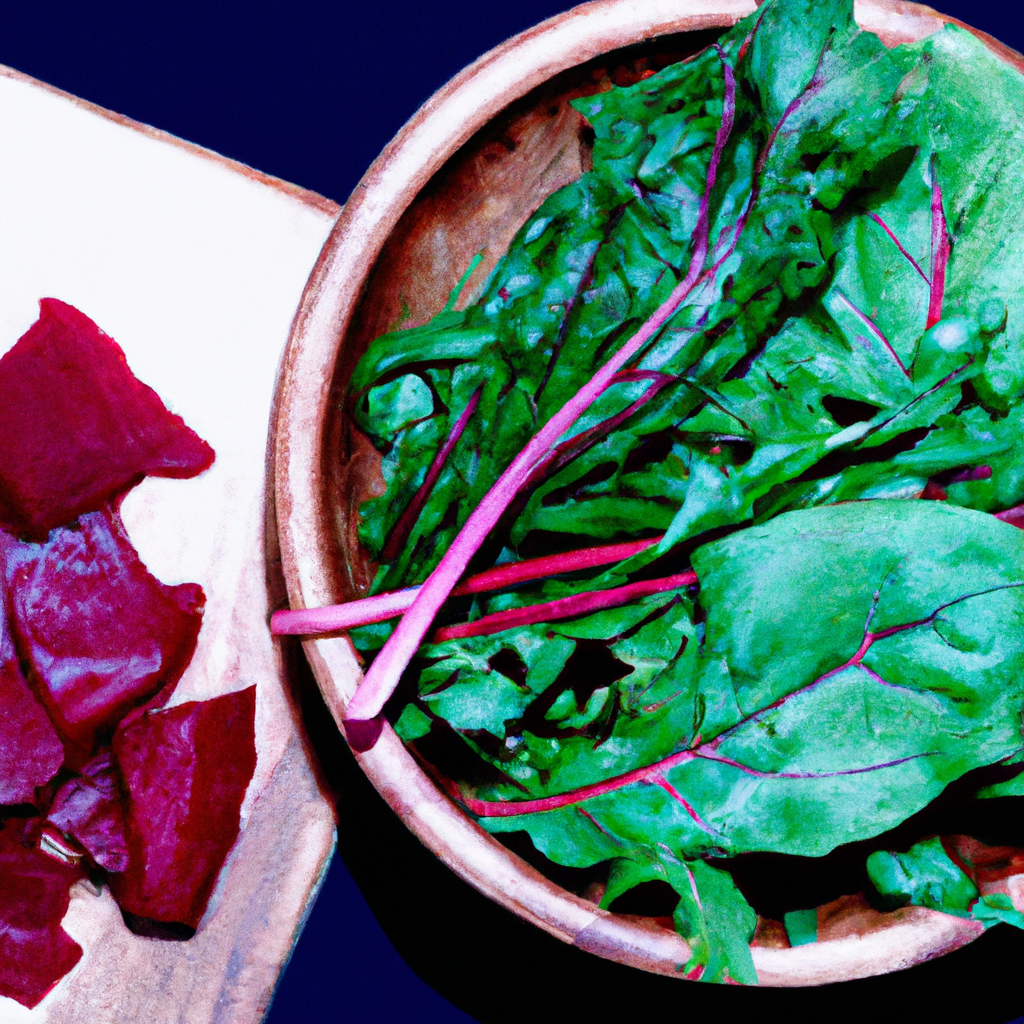Have you ever felt that your workouts are not giving you the desired results? Do you feel tired and drained after exercising, instead of energized? The culprit might be low nitric oxide levels in your body.
Nitric oxide is a molecule that helps in increasing blood flow and oxygen supply to different parts of the body, including muscles. This increase in blood flow can boost your performance during exercise and improve recovery time.
Coincidentally, there are many foods that can help boost nitric oxide levels in the body. Incorporating these foods into your diet can provide numerous health benefits beyond just improving exercise performance.
In this article, we will explore what nitric oxide is and why it is important for our bodies. We will also discuss some of the best foods to eat to increase nitric oxide production, as well as other ways to naturally raise its levels.
So let’s dive in!
Key Takeaways
- Low nitric oxide levels can lead to poor exercise performance and fatigue.
- Foods high in nitrates, such as leafy greens, beets, garlic, pomegranate, watermelon, and dark chocolate, can boost nitric oxide levels and improve overall health.
- Nitric oxide supplements and cardiovascular exercise can also increase nitric oxide levels, while chronic stress can reduce it.
- Precautions and considerations include consulting with a healthcare professional before trying new methods, watching for negative symptoms, and not relying solely on supplements.
Understanding Nitric Oxide and Its Benefits
Let’s dig into what nitric oxide does and why it’s beneficial for our health! Nitric oxide is a molecule that plays an essential role in maintaining the health of our blood vessels. It helps dilate the arteries, allowing more blood to pass through, which can lower blood pressure and reduce the risk of heart disease.
Research studies show that increasing your nitric oxide levels can have numerous health benefits. For example, it may improve exercise performance by increasing oxygen delivery to muscles and reducing fatigue. It may also improve brain function by increasing blood flow to the brain and promoting better memory and cognitive function.
In addition to its cardiovascular and cognitive benefits, nitric oxide may also help boost immunity and reduce inflammation in the body. This makes it a valuable nutrient for overall health and well-being.
So, if you want to reap the many health benefits of nitric oxide, incorporating foods high in nitrates such as leafy greens, beets, garlic, pomegranate, and watermelon into your diet is a great place to start!
Foods That Boost Nitric Oxide Production
Eating a diet rich in leafy greens and beets can lead to improved blood flow, which may benefit athletes looking to enhance their performance. This is because these foods are high in nitrates, which the body converts into nitric oxide. Nitric oxide helps to dilate blood vessels and increase blood flow, delivering more oxygen and nutrients to muscles during exercise.
The science behind nitric oxide is that it’s a molecule produced naturally by the body that plays a crucial role in regulating blood pressure and improving cardiovascular health. Optimal levels of nitric oxide have been linked to reduced risk of heart disease, lower inflammation levels, and improved cognitive function.
Aside from leafy greens and beets, other foods that boost nitric oxide production include garlic, dark chocolate, pomegranate juice, watermelon, and citrus fruits. Incorporating these foods into your diet can help improve overall health and potentially enhance athletic performance by increasing blood flow to muscles during exercise.
So next time you’re at the grocery store or planning your meals for the week, consider adding some of these nitrate-rich foods to your cart for optimal health benefits.
Incorporating Nitric Oxide-Boosting Foods into Your Diet
Now that you know which foods can help boost your nitric oxide levels, it’s time to start incorporating them into your diet.
You may be wondering how to do this, but don’t worry – we’ve got you covered!
In this subtopic, we’ll discuss meal and snack ideas, recipes, and cooking tips to help you make the most of these nitric oxide-boosting foods.
Meal and Snack Ideas
Looking for quick and easy ways to boost your nitric oxide levels? Look no further than your next meal or snack! Incorporating nitric oxide-boosting foods into your diet can be both quick and budget-friendly.
For a snack on-the-go, try grabbing a handful of almonds or pistachios. These nuts are high in arginine, an amino acid that helps to produce nitric oxide.
You can also add some sliced beets to your salad for an extra boost of nitrates. Top it off with some goat cheese for a delicious and nutritious lunch option.
Remember, small changes in your diet can make a big impact on increasing your nitric oxide levels.
Recipes and Cooking Tips
Get creative in the kitchen with these recipes and cooking tips that’ll help you incorporate more nitric oxide-boosting ingredients into your meals. Here are some ideas to get you started:
Roast beets: Beets are a great source of dietary nitrates, which our bodies convert into nitric oxide. To bring out their natural sweetness, try roasting them in the oven with olive oil and a sprinkle of sea salt.
Grill salmon: Salmon is rich in omega-3 fatty acids, which’ve been shown to increase nitric oxide production in the body. Brush your fillets with a mixture of honey and soy sauce before grilling for an extra boost of flavor.
Add arugula to salads: Arugula is another leafy green that’s high in nitrates. Toss it with some sliced strawberries, goat cheese, and balsamic vinaigrette for a refreshing summer salad.
Use garlic liberally: Garlic contains allicin, a compound that has been shown to increase nitric oxide levels in the blood. Try adding minced garlic to marinades or sautéed vegetables for an easy way to boost your intake.
Other Ways to Increase Nitric Oxide Levels
You can also give your nitric oxide levels a boost by incorporating these other methods into your routine.
One option is to try nitric oxide supplements, which are available over-the-counter and online. These supplements typically contain ingredients like L-arginine or beetroot extract, which have been shown to increase nitric oxide production in the body. However, it’s important to speak with your doctor before starting any new supplement regimen.
Another way to increase nitric oxide levels is through exercise routines that focus on cardiovascular health. Activities like running, cycling, and swimming can all help improve blood flow and oxygen delivery throughout the body, leading to increased nitric oxide production. In addition, strength training exercises that work large muscle groups (like squats and deadlifts) have also been shown to boost nitric oxide levels.
You can also increase your nitric oxide levels by reducing stress in your life. Chronic stress has been linked with reduced nitric oxide production in the body, while relaxation techniques like meditation or deep breathing have been shown to enhance it. So take some time each day to unwind and destress – not only will it benefit your overall health and wellbeing, but it may also help support healthy nitric oxide levels.
Precautions and Considerations
Now that you know different ways to increase your nitric oxide levels, it’s important to consider some precautions and potential side effects. While increasing nitric oxide can have many benefits, certain medical conditions may require consultation with a doctor before trying any methods.
Here are some things to keep in mind:
- If you have low blood pressure or take medication for high blood pressure, talk to your doctor before attempting to boost your nitric oxide levels.
- Nitric oxide supplements can interact with certain medications such as erectile dysfunction drugs and blood thinners. Always consult with a healthcare professional before taking any new supplements.
- Some people may experience headaches or nausea when attempting to increase their nitric oxide levels. These side effects should subside after a few days, but if they persist, stop the method immediately and consult with your doctor.
It’s important to remember that everyone’s body is different and what works for one person may not work for another. It’s always better to err on the side of caution and seek advice from a medical professional if you’re unsure about anything related to your health.
Remember these bullet points when considering ways to increase your nitric oxide levels:
- Always consult with a healthcare professional before attempting any new methods.
- Pay attention to how your body reacts – if you experience any negative symptoms, stop the method immediately.
- Don’t rely solely on supplements – incorporating foods rich in nitrates into your diet is a healthier and more natural way of boosting nitric oxide levels.
- Be patient – it may take some time for changes in diet or lifestyle habits to have an impact on nitric oxide levels.
- Keep track of any changes in how you feel – this could be helpful information for both yourself and your healthcare provider.
Conclusion
Great job! You’ve learned about the benefits of nitric oxide and discovered some foods that can help boost your levels. By incorporating these foods into your diet, such as leafy greens, beets, and garlic, you may experience improved blood flow, lower blood pressure, and enhanced athletic performance.
Remember to also consider other ways to increase nitric oxide levels, such as exercise and reducing stress. But like with any dietary changes or supplements, it’s important to consult with a healthcare professional before making any major adjustments to your routine.
Think of it like adding fuel to a car – by giving your body the right nutrients and care, you’ll be able to rev up its performance for a smoother ride ahead.


